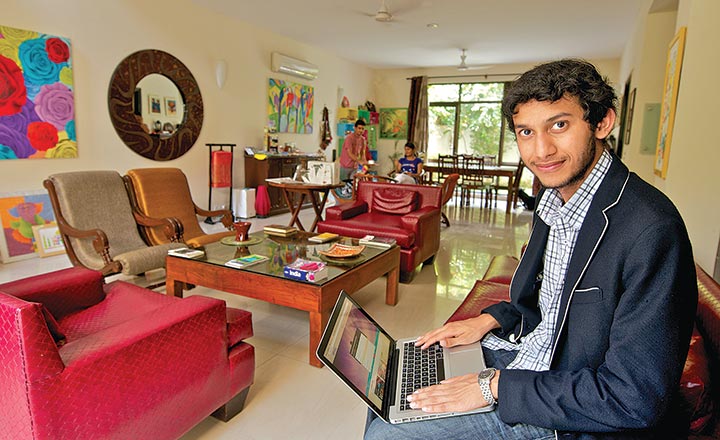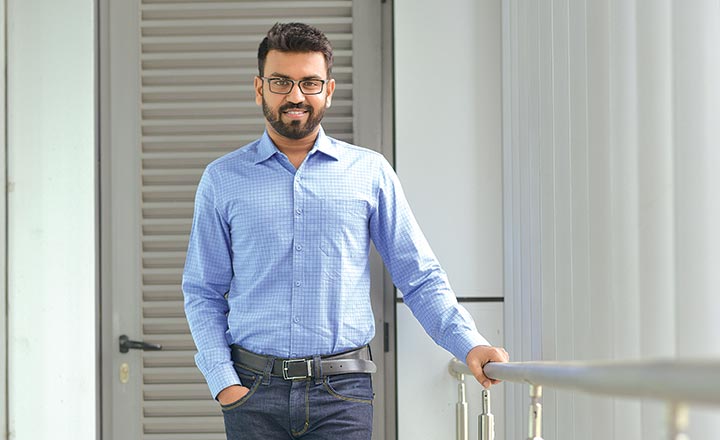It has followed the script of most boom-bust stories: the start-up frenzy, the FoMO, euphoria, the implosion of many and then the survival of the fittest. In 2015, the budget hotel space was viewed as one of the most exciting segments. OYO Rooms had already started becoming a neighbourhood name. Ritesh Agarwal, just 21 years old then — Thiel Fellow and a college dropout — had become a media darling. And with the kind of growth OYO was seeing, it was only natural for over a dozen start-ups to jump into the frenzy that was hotel aggregation, between 2014-2016. This included names such as, RoomsTonite, ZO Rooms and WudStay. The $10 billion budget hotels segment was huge and lucrative, but there was a catch for the aggregators — monetisation wasn’t easy.
Fault lines soon started becoming obvious. For the highly fragmented budget hotel segment in India, quality and customer experience weren’t very familiar terms. The aggregator model didn’t give the start-ups enough control over the hotel properties to ensure a consistent quality experience for customers. Unit economics went crazy for most players. This combined with the fund crunch in 2016 made sure that many aggregators went belly up, one after the other. The shutdowns in the hospitality space in 2017 included some prominent names such as, Stayzilla which in fact went through some dramatic events including the arrest of its founder Yogendra Vasupal. The company that was in business for over 12 years had raised about $33 million from the likes of Matrix Partners and Nexus Venture Partners. In an online post in 2017, Vasupal announced the shutdown, citing lack of network effect, inability to expand quickly, high costs and low revenue. RoomsTonite and HotelsAroundYou, too, wound up their operations after running into a cash crunch and inability to raise fresh funding. Others just vanished silently leaving the ground wide open for just a handful of players.
Pocket friendly
Booking a budget hotel had seldom been a pleasant experience for the Indian traveller. The brand options that were available such as, Ginger, Ibis, LemonTree etc. were not pure-play budget hotels given that their price-points were way above what a budget traveller could afford. The next option for the traveller was to book with any of the local hotels and compromise on the quality of stay. Be it a family on a vacation or a budding entrepreneur on a business trip, the story was more or less the same. Online travel agencies (OTA) such as MakeMyTrip (MMT) or Yatra provided huge discounts and made hotel discovery easy, but they had not started assuring quality of hotels. It was into this gap that players such as OYO, ZO Rooms, FabHotels, Stayzilla and Treebo marched in. While Stayzilla pivoted its model to aggregating homestays across India, ZO Rooms targeted mostly the backpackers. FabHotels and Treebo experimented with a slower paced franchise model, while OYO flaunted high numbers with its aggregation model.

But this was in 2015. Three years have passed since and the only names that remain from the list are — OYO, Treebo and FabHotels. Interestingly, during the time of Stayzilla’s shut down, both OYO and Stayzilla had the same revenue – $2 million. OYO in fact had higher burn rates with its losses amounting to a staggering $52.5 million as against Stayzilla’s $14 million. But OYO went on to become the market leader while Stayzilla shuttered. The reason: OYO’s kitty was flush with $188 million.
Finding their way
SoftBank’s investment rationale as cited in multiple instances is to bet on the market leader. OYO had the numbers to prove that it was way ahead of others. In 2015, SoftBank came on board making the start-up fatter by $100 million. OYO currently has 70,000 rooms across India, Malaysia and Nepal. The part inventory model — where it took up a few rooms and threw in some basic amenities like toiletries and WiFi — ensured scale but customer rating took a dive. In May 2016, the company shifted from its aggregator model to franchise model in order to reduce its operational costs and to improve serviceability.
Pankaj Makkar, MD at Bertelsmann India Investments and an investor in Treebo remarks, “I am not very surprised to see OYO pivoting their business model and becoming more asset-heavy, because quality is a big issue and you can’t solve it the way they were doing it earlier. That just proves, Treebo had the right model,” he says.

However, according to Agarwal, founder and CEO, OYO Rooms, what happened wasn’t a sudden pivot, but a gradual evolution. “We started with a full stack hospitality business — taking the entire property, turning it around and making sure we deliver a great experience,” he explains. OYO Rooms was launched in 2013 after Agarwal shut down Oravel Stays (after functioning for over a year), which was based on the Airbnb model. The part inventory model, which was adopted later in 2015-2016 was not a business model change, but a ‘business strategy aberration’ in order to ramp up aggressively. “Halfway through 2016 when we saw that we have established relationships with many of these partners, we felt it’s time to go deeper in terms of association and operate with the principle of exclusive inventory, brand and technology. In the past year-and-half, we found that a majority of our transactions are from our exclusive assets. Clearly our long-term vision was the same and that is the direction in which OYO will continue to evolve,” says Agarwal.
While OYO Rooms operates in the economy segment, in a move to target the mid-value market, OYO Townhouse was launched in January 2017. While OYO Rooms were priced between Rs.1,000-Rs.1,500, Townhouse started at Rs.2,500. In 2017, when the company shifted to a full inventory model it was evaluated as a move largely driven by flak from customers on quality issues. “Mid-2015 we had a significant amount of customer feedback that we had to improve on. We learnt from that and in the past one-and-a-half-year, evolved to not only improve customer experience, but also become a market leader,” says Agarwal. A few months ago the company launched OYO Homes, to target the vacation rental homes market.
OYO’s recent pivot has not only helped with tight control over the quality of its service, but has also put it back on platforms such as, MMT and Yatra, which had delisted OYO along with ZO in 2015. While any incremental business is welcome, OYO states that less than 10% of its business comes from OTA platforms and the majority of it through its own channels.
For 2018, Agarwal has made it clear that aggressive acquisitions and acqui-hires (where a company is acquired for the skillsets and expertise of its staff) is the way to go. Ironically, this comes in the backdrop of its ongoing legal battle with ZO Rooms after a mysterious acquisition. In 2016, SoftBank went all over town announcing the acquisition of ZO by OYO. One year down the line, things took a dramatic turn when OYO announced that it never acquired ZO Rooms, failing to see any value in the deal. What ensued was prolonged mud-slinging from either side, which has now moved to the courts. Agarwal is cagey about what transpired. “In late 2015, we explored a potential acquisition of ZO. That non-binding term sheet was terminated in September 2016. Post that we tried multiple ways of finding potential value in the business, but were unsuccessful and hence we confirmed publicly that OYO had ended all discussions with ZO in this matter,” he reveals.
Three stars
What started off as a multi-player game with several budget hotel start-ups vying for a share of the pie has now narrowed down to a triangular contest between OYO, Treebo and FabHotels. While OYO started off as Oravel Stays in 2012, FabHotels entered the scene in 2014 as Casa2Inn. One year down the line, Treebo launched a franchise model in 2015 and now has about 350 properties and around 7,500 rooms. Founded by Kadam Jeet Jain, Rahul Chaudhary and Sidharth Gupta, Treebo has raised $57 million, till-date, after three rounds of funding. Its latest Series C round in 2017 saw Hong Kong-based investment firms Ward Ferry and Karst Peak Capital along with existing investors SAIF Partners, Bertelsmann India Investments and Matrix Partners writing a cheque for $34 million. Through a franchise and ‘manchise’ model (a hybrid of franchise and management), the start-up exercises tight control over quality by imparting training to the hotel staff and via regular audits. It takes an 18-25% cut from the property owners and in return offers them a minimum guarantee model — Treebo properties see above 75% occupancy on average.
Gupta takes pride in the fact that they got the business model bang on. “I think from a business model standpoint there’s some convergence in what competition is trying to do,” he says. That said, despite following the franchise model since day one, Treebo is behind OYO in numbers. Gupta gets defensive and says it is only natural given the kind of money its competitor has been splurging and also because the model that Treebo has been following is not fast paced. “If you have a lot of money to throw around then you can easily acquire hotels, keep stuffing money in the hotel owner’s bank account and give free room nights to customers. But how sustainable is it, is the question.” According to him, what matters more are customer ratings where he claims Treebo ranks the highest.
Agarwal however claims that OYO has not been giving deep discounts for the past couple of years and in fact has brought down its marketing expenditure by a third. For Treebo though, marketing spends could soon be heading north as it is aiming to expand to 750-800 properties by the end of 2018. The addition of about 50 properties each month is a very steep target and Gupta maintains that at any point of growth if he feels customer experience is being hit, the rapid pace would be halted.

This approach finds resonance with Vaibhav Aggarwal, founder of Gurgaon-based FabHotels. He notes that with the franchise model it is not easy to scale as fast as the aggregation model since one has to spend time on transforming the property and training the staff. FabHotels in fact tried out the aggregation model in the beginning, but after their second or third property figured that it might not work well for customers. “In our mind, the pros of the franchise model far outweighed its cons. Respectability of the brand is important in this segment to develop stickiness and being just discount driven doesn’t help,” he says.
FabHotels, which started off in 2014 currently manages around 300 properties and 7,500 rooms. It raised a Series B round of $25 million in 2016 led by Goldman Sachs Investment Partners with participation from existing investor, Accel Partners. The start-up claims to rank the highest in terms of revenue per available room it generates for its operators. When pointed out that OYO still scores in terms of room count and brand familiarity, Aggarwal counters, “OYO is still very much aggregation driven. We are managing about 7,500 rooms and are the third-largest after Taj and ITC in terms of the number of rooms.”
Blue Ocean
Be it OYO, Treebo or FabHotels, budget hotel brands in India have significant headroom when one takes into account that there are about a million rooms on the supply-side, which are highly fragmented. Add to this demand from millennial travellers and increasing business travel. In fact, Prashanth Prakash, partner at Accel Partners and investor at FabHotels, feels, “The number of aircrafts ordered and number of emerging airports, in my opinion, are lead indicators of the amount of travel that people are doing.” In a comparable economy like China, the onset of economy hotel chains was witnessed in the mid-90s when Jin Jiang, the first large scale economy hotel chain came into the picture, followed by China Lodging Group, Home Inn, 7 Days Inn, GreenTree Inns etc. OYO raised $10 million from China Lodging Group in September 2017. The case is not very different in the US, which again has several chains like Choice Hotels, Best Western, Americas Best Value Inn, Red Roof Inn, etc. “Globally these have been very IPO friendly businesses. I don’t see why it will be any different in India once they build scale. That is why it is also interesting for investors,” explains Prakash.
That said, the space did witness a large number of shutdowns and the survivors now plan to go full steam. FabHotels expects to beat ITC in terms of room count soon and Taj by next year.
ITC and Taj currently have a domestic room count of 8,600 and 14,000 respectively. Neither Treebo nor FabHotels, however, count the legacy giants as competitors given that the expansion pace, footprint and price points are very different.
While OYO claims to have brought down its marketing and branding expenditure, Makkar of Bertelsmann feels that OYO’s war chest in a way works in favour of the overall sector. “Having deep pockets help OYO in customer acquisition and branding. In fact, if they grow fast, the whole sector will grow as well. So we don’t have to spend much money on that, which is even better!” he quips.
Even as Gupta of Treebo believes his venture is well on the path to operating profitability in about three years, neither OYO nor FabHotels want to put a timeframe to turning profitable. “During 2016-17 we doubled our booking value and saw a 30% reduction in operating losses due to higher leverage of our scale. Each of our hotels is making decent margins and the only reason for loss is central expenses and operating leverage, which continues to grow,” says Agarwal.
Sold out
While none of the bigger players have turned profitable and many smaller players have shut shop, the segment seems to be moving towards some sort of sanity after the initial frenzy. What has become clear by now is that unlike e-commerce or on-demand cabs, the segment doesn’t seem to be a winner-takes-all market as when it comes to hotel options, people’s preferences differ. A repetition of what happened in the offline space where an ITC and a Marriott co-exist is expected to happen in the online space as well. “Even if you put all three of us together we are not even 5% of the entire market,” points out Gupta. With the opportunity size up for grabs, he sees more players entering the segment in the future. Makkar adds, “The large international chains have not made their bets yet. After OYO and to an extent Treebo reach critical mass, some of these international hospitality players will come to India.”
For now, everybody has their eyes on what biggie OYO is up to in terms of expansion or acquisitions. Fueled by a war chest, OYO has made it clear that it is on the lookout for newer capabilities — from apartment chains to IoT companies, anything that could grow the brand and build capability. “We generally don’t like acquiring companies for market share; we would like to see more collaborative, broader industry-based growth over time,” Agarwal adds.
Believed to be the next ‘airline-like’ industry in terms of sales and profit growth, the budget hotel industry is being keenly watched by big investors. Sub segments and stratified offerings — like in the case of premium and luxury hotel space — is already happening in the budget segment too. The ‘manchise’ model might turn out to be the next big thing but it is for the native players to prove how well they can execute.












 Just one email a week
Just one email a week